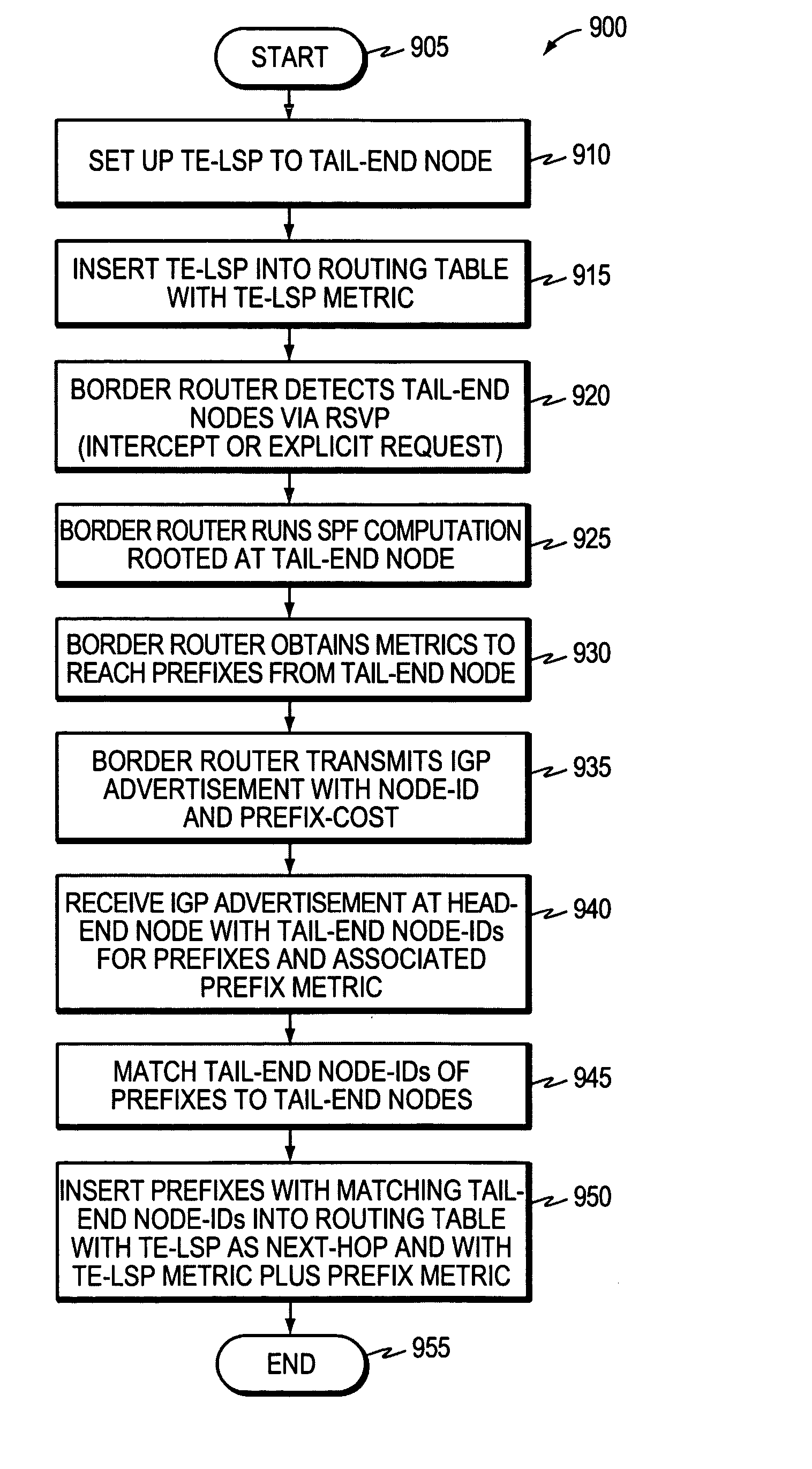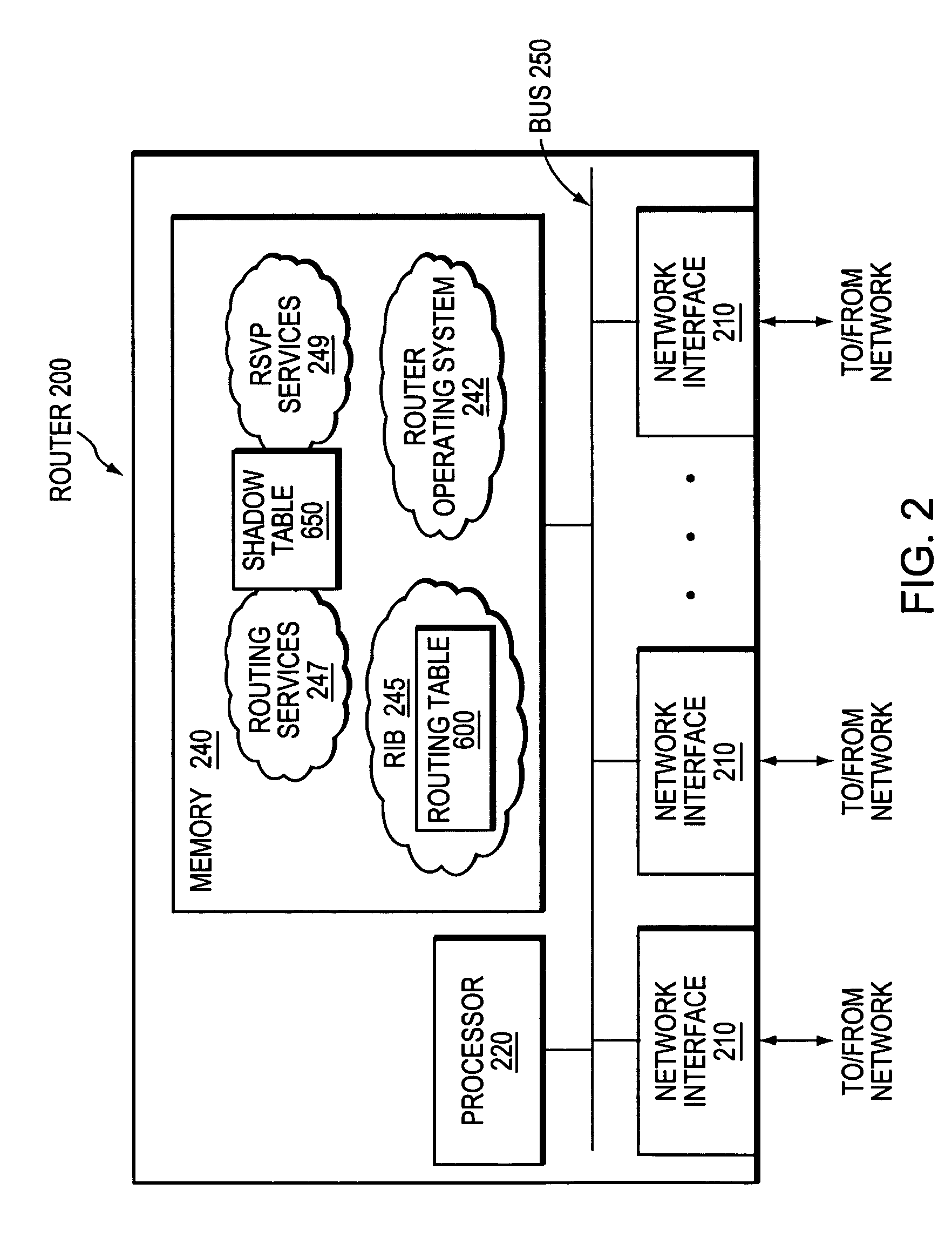Inter-domain TE-LSP with IGP extensions
a technology of inter-domain te-lsp and extension, applied in the field of computer networks, can solve the problems of path computation at the head-end lsr, burdensome management of interconnected computer networks, domain te-lsps, etc., and achieve the effect of avoiding some of the risks and possible errors
- Summary
- Abstract
- Description
- Claims
- Application Information
AI Technical Summary
Benefits of technology
Problems solved by technology
Method used
Image
Examples
Embodiment Construction
[0036]FIG. 1 is a schematic block diagram of an exemplary computer network 100 comprising areas A1 and A2 having exemplary intradomain routers A and B, respectively, and area A3, which has exemplary intradomain routers C, D, and E. In addition, A1 and A2 share area border routers ABR1 and ABR2, while A2 and A3 share ABR3 and ABR4. As used herein, an area is a collection of routers that share full network topology information with each other but not necessarily with routers outside the area. A collection of areas may be contained within a single autonomous system (AS). The term area as used herein also encompasses the term “level” which has a similar meaning for networks that employ IS-IS as their interior gateway protocol (IGP), in which case the area border routers ABR1-4 are embodied as level 1 / level 2 (L1L2) routers. These examples are merely representative. The terms area and level are used interchangeably herein, as well as the use of ABR, L1L2 routers, and more generally, IGP ...
PUM
 Login to View More
Login to View More Abstract
Description
Claims
Application Information
 Login to View More
Login to View More - R&D
- Intellectual Property
- Life Sciences
- Materials
- Tech Scout
- Unparalleled Data Quality
- Higher Quality Content
- 60% Fewer Hallucinations
Browse by: Latest US Patents, China's latest patents, Technical Efficacy Thesaurus, Application Domain, Technology Topic, Popular Technical Reports.
© 2025 PatSnap. All rights reserved.Legal|Privacy policy|Modern Slavery Act Transparency Statement|Sitemap|About US| Contact US: help@patsnap.com



